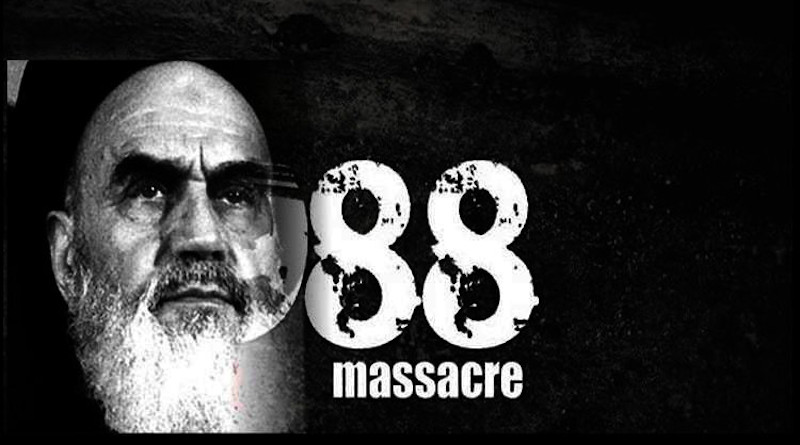How Many More Must Die Before UN Investigates Iran’s 1988 Massacre? – OpEd
Is it possible to simply erase a massacre of 30,000 people from memory and pretend it never happened? That’s what the Iranian authorities are trying to do to cover up the 1988 massacre of political prisoners.
In recent weeks, to the shock of victims’ families, authorities have begun building over Iran’s most famous mass grave at the Khavaran cemetery near the capital where thousands of families go to mourn their loved ones who were buried there following a nationwide purge of political prisoners in 1988.
For over three decades, Iranian authorities have sought to erase any trace of the 1988 massacre, persecuting and harassing families of the victims, dispersing them at gatherings and arresting them during commemorations at the Khavaran cemetery.
The latest destruction of the mass grave has prompted an outcry from victims’ families and international human rights groups.
In a letter to the United Nations Secretary-General last week, 1,112 families of the victims stated: “While international human rights organizations and experts have described the massacre as a crime against humanity… the Iranian regime has embarked on erasing the traces of the evidence on the massacre by destroying the mass graves where they are buried … These actions constitute the collective torture of thousands of survivors and families of the martyrs. It is another manifest case of a crime against humanity.”
Amnesty International’s Deputy Director for the Middle East and North Africa, Diana Eltahawy, said: “This is the latest in a series of criminal attempts over the years by Iran’s authorities to destroy mass grave sites of victims of the 1988 prison massacres in a bid to eliminate crucial evidence of crimes against humanity, denying truth, justice and reparation to the families of those forcibly disappeared and extrajudicially executed in secret.”
The 1988 massacre took place in Iranian prisons following a religious order by Iran’s then-Supreme Leader Ayatollah Khomeini against members of the opposition People’s Mojahedin Organization of Iran (PMOI or MEK). Death Commissions were formed across the country sending political prisoners to their death.
According to survivors, prisoners were hanged from cranes, usually six at a time. Victims’ bodies were doused with disinfectant, and they were buried by night secretly in mass graves across the country.
Rather than facing trial, members of the 1988 Death Commissions have been promoted to senior positions of power. They include Iran’s current Judiciary Chief Ebrahim Raisi and Justice Minister Alireza Avaie.
London-based NGO Justice for the Victims of the 1988 Massacre in Iran (JVMI) has identified nearly 100 members of the 1988 Death Commissions, many of whom today hold high office.
Last September, seven United Nations Special Rapporteurs wrote to the Iranian authorities stating that the 1988 massacre could amount to “crimes against humanity” which warrant an “international investigation.”
They pointed out that the international community’s failure to investigate the 1988 massacre has “had a devastating impact on the survivors and families” and has fueled impunity in Iran and “emboldened” the Iranian authorities to “conceal the fate of the victims and to maintain a strategy of deflection and denial.”
Outraged by the continued impunity of Iranian officials, dozens of international human rights experts, including former UN officials, last week called on UN High Commissioner for Human Rights Michelle Bachelet to open an international Commission of Inquiry into these ongoing crimes against humanity.
An open letter signed by more than 150 international legal and human rights experts, including former UN High Commissioner for Human Rights Mary Robinson and former Deputy UN Secretary-General Mark Malloch-Brown, urged the “establishment of an international investigation” into the 1988 massacre.
Signatories to the letter, who include 28 former UN Special Rapporteurs on human rights, said that a Commission of Inquiry into the 1988 mass extrajudicial executions and forced disappearances was necessary to “end the culture of impunity that exists in Iran.”
That impunity was put on display when in 2019 the authorities killed more than 1500 people on the streets as they attempted to quell nationwide anti-government protests. Top Iranian officials have publicly defended both the 1988 massacre and the more recent deadly crackdowns.
The question which now remains is how many more dissidents must die before the UN challenges this impunity by investigating the 1988 massacre? How many more families must face arrest, imprisonment, and torture simply for asking the authorities to let them know the final fate of their loved ones and their place of burial? How many more families must worry that due to the impunity among Iranian officials, their children could face a similar fate today simply for attending another peaceful anti-government rally?
It’s time the Office of the UN High Commissioner for Human Rights (OHCHR) breaks its silence over the 1988 massacre and the Iranian authorities’ attempts to silence victims’ relatives and wipe away the evidence.
Iran’s 1988 massacre is a stain on humanity’s collective conscience. UN High Commissioner Bachelet can turn the tables with the stroke of a pen by ordering a UN probe into the 1988 massacre. By doing so, she can send a message to Iranian families that they are not alone in their calls for justice, while bringing long sought justice to the perpetrators of Iran’s greatest crime against humanity.
*Hanif Jazayeri is Secretary of London-based NGO Justice for the Victims of the 1988 Massacre in Iran (JVMI) and a news editor. His Twitter handle is @HanifJazayeri.

